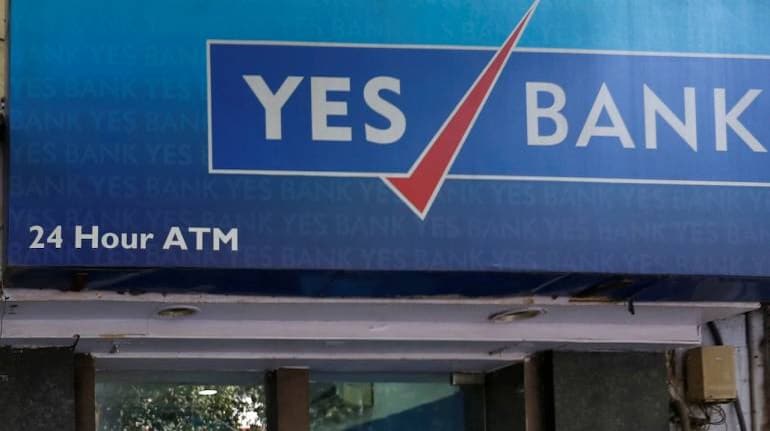



Editor’s note: A bailout in March this year by an SBI-led consortium has given Yes Bank another chance to get back to business. In the April-June quarter, the bank received the much-needed survival capital through a follow on public offer. In a multi-part series, Moneycontrol will look at the journey of private sector lender so far and the challenges ahead. Here’s the first part:
In the late 90s, an enthusiastic, ambitious young banker decides he wants to set up a lending institution in India. He begins by creating a non-banking finance company (NBFC) partnering with colleagues. They secure a bank licence in 2003-04. The banker outsmarts the partners and grows the bank to a major brand.
At some point, ambition gives way to greed for quick money. The banker starts fudging numbers and flouting lending rules; gets caught after a decade and half. Goes behind bars, leaving the institution with a bagful of toxic assets. The bank, however, is rescued by good Samaritans who decide to keep it alive.
In a nutshell, that’s the story so far of Rana Kapoor, who co-founded Yes Bank. A new chapter is beginning. Four months after the bailout by a State Bank of India (SBI)-led consortium, Yes Bank is back on track — under the gaze of its rescuers.
New hope
After the June quarter result that showed the bank trimming its losses and a Rs 15,000 crore follow-on public offer (FPO), banking analysts have inferred that the bank has survived the most critical phase of its life.
“The bank is out of an existential crisis. The capital raised is enough to survive for now. But, that’s not enough. From this point, it needs to aggressively focus on business performance, to reacquire customers and control the asset quality issues,” said Siddarth Purohit, analyst at SMC Global Securities.
Confidence returns
As Moneycontrol reported on July 28, Yes Bank's first quarter earnings indicate improvement across key parameters. Much needed capital has finally come, deposits have grown on a quarter-on-quarter basis and asset quality has remained stable in the June quarter. It has managed to win back some confidence from depositors. Deposits grew 11.4 percent QoQ at Rs 1,17,360 crore, aided by 26.4 percent and 12.6 percent growth in current account and term deposits, respectively. Bad loans have remained almost at the same levels as in the previous quarter and the management is attempting to pare down its dependence on wholesale deposits and advances.
Deposits grew 11.4 percent QoQ at Rs 1,17,360 crore, aided by 26.4 percent and 12.6 percent growth in current account and term deposits, respectively. Bad loans have remained almost at the same levels as in the previous quarter and the management is attempting to pare down its dependence on wholesale deposits and advances.
Prashant Kumar, the former SBI official who was given the task of steering the bank back to health, is confident that the capital raised through the FPO will be enough for the bank to survive for another two years. But that assumption may prove wrong in the event of an asset quality shock.
As on June 30, the Common Equity Tier-l ratio of the bank was 6.5 percent and Tier l ratio was 6.6 percent. Considering the capital infusion, proforma CET-1 ratio as at June 30 stood at 13.3 percent and total capital adequacy ratio at 20 percent. Unless there is a major spurt in NPAs in the approaching quarters, this capital will be enough for the bank for the time being.
The bank has shrunk its loan book in the quarter under review and is focusing more on deposit mobilisation and improvement in capital ratios. It has availed a special liquidity facilities (SLF) from the Reserve Bank of India (RBI) to survive. This has helped Yes Bank to comply with its minimum regulatory liquidity coverage ratio requirements, with LCR ratio at 114 percent as on June 30.
But fresh challenges begin...
Having got the much-needed capital, the next big challenge for Yes Bank is to improve its asset quality in the post-moratorium period. According to Kumar, about 20-25 percent of the customers have opted for the moratorium. He said a major chunk of these customers (around 90 percent) have not defaulted on payments or have regular transactions.
However, these are largely assumptions at this stage.
How many of the moratorium customers will be able to repay loan instalments is the question. Moratorium loans (EMIs deferred for six months) have made non-performing asset (NPA) forecasts tough for analysts. According to RBI’s financial stability report, gross NPAs of banking system could rise to near 15 percent in the next one year and weaker institutions will have a tough time to withstand the crisis.
The central bank’s caution is not exaggerated. COVID-19 has redefined the risk perceptions in the banking sector. Several businesses have shut shop. The prolonged lockdown has impacted businesses forcing them cut staff. There is no way to assess how these factors will translate to bank’s recovery. While the entire industry is facing the COVID-shock, Yes Bank will have to fight both evils simultaneously.
Yes Bank’s bad loan levels have stabilised with gross NPAs at 17.3 percent as at June-end, a tad higher than 16.8 percent QoQ. In absolute terms, GNPAs have declined to Rs 32,703 crore from Rs 32,878 crore in the preceding quarter. As of now, there is no major concern on the asset quality front. But, that’s probably because of the moratorium cover.
Shattered image
Yes Bank has to also fight the memories of a controversial past. The bank lost trust with many customers after Kapoor’s alleged fraud came to light. It will take a long time for the wound to heal.
For beginners, Yes Bank’s beginning, failure and rescue is quite an eventful story. There are analysts who believe that its financial failure could have been averted if it had a well-functioning management and board in the Rana Kapoor era. It didn’t have any.
The promoter-CEO called the shots and decided on every single business decision, which later led to the huge NPA mess. Kapoor treated the bank as his own piggy bank. He allegedly used the bank for a series of quid-pro-quo deals. This, along with irregularities in NPA disclosures, finally led Kapoor to a disgraceful exit from his bank when the RBI finally cracked the whip in late 2018.
In March, the Enforcement Directorate (ED) launched an investigation into some aspects of dealings and transactions by Kapoor and arrested him. Subsequently, the Central Bureau of Investigation (CBI) and the Serious Fraud Investigation Office (SFIO) have also launched investigations on the aforesaid aspects. The investigations revealed that Kapoor and family ran a byzantine collection of 101 companies from Samudra Mahal through three holding firms — Morgan Credits (MCPL), Yes Capital India (YCPL) and RAB Enterprises — according to the ED. The holding companies ran businesses as diverse as real estate and renewable energy.
Was merger a better option?
There are many who believe that RBI and government could have asked SBI, the lead banker of the rescue team, to acquire the bank outright instead of a bailout, which essentially means putting good money after bad. It was, in reality, a forced bailout.
A merger could have been more effective to instil trust among customers, a section of analysts believe. Already, SBI and other banks have infused significant money in Yes Bank as part of the bailout scheme. They may have to do more.
Yes Bank shares closed at Rs 11.75, down 1.26 percent from its July 28 close. Its future depends on its ability to generate customer confidence to grow its business. In the June-quarter, loan book shrank 4 percent. There people like Ashvin Parekh, an independent banking sector expert, who believes the bank has a strong future. “Yes Bank has a good management in place. I think there is an upside,” Parekh said.
A fit candidate for a buyout?If Yes Bank fails to regain the investor trust, one option is that it will have to eventually get merged with SBI. The backing of half of the banking industry and RBI support have given a chance to the bank to return to life. But promoters can't handhold the bank forever. It will have to find a path on its own.
“Eventually, the bank will have to find a majority investor who can buy out the bank. The share of NPAs on its books is still too high,” said another analyst who didn’t want to be named since he stopped tracking the firm.
At the end of June, the bank has stressed asset book of about Rs 53,000 crore, of which Rs 21,000 crore is unprovided. Even if, say, about 5-10 percent of the assets go bad in the post moratorium period, the bank will require substantial additional capital to provide for these loans. The FPO money provides only temporary relief.
Discover the latest Business News, Sensex, and Nifty updates. Obtain Personal Finance insights, tax queries, and expert opinions on Moneycontrol or download the Moneycontrol App to stay updated!
Find the best of Al News in one place, specially curated for you every weekend.
Stay on top of the latest tech trends and biggest startup news.